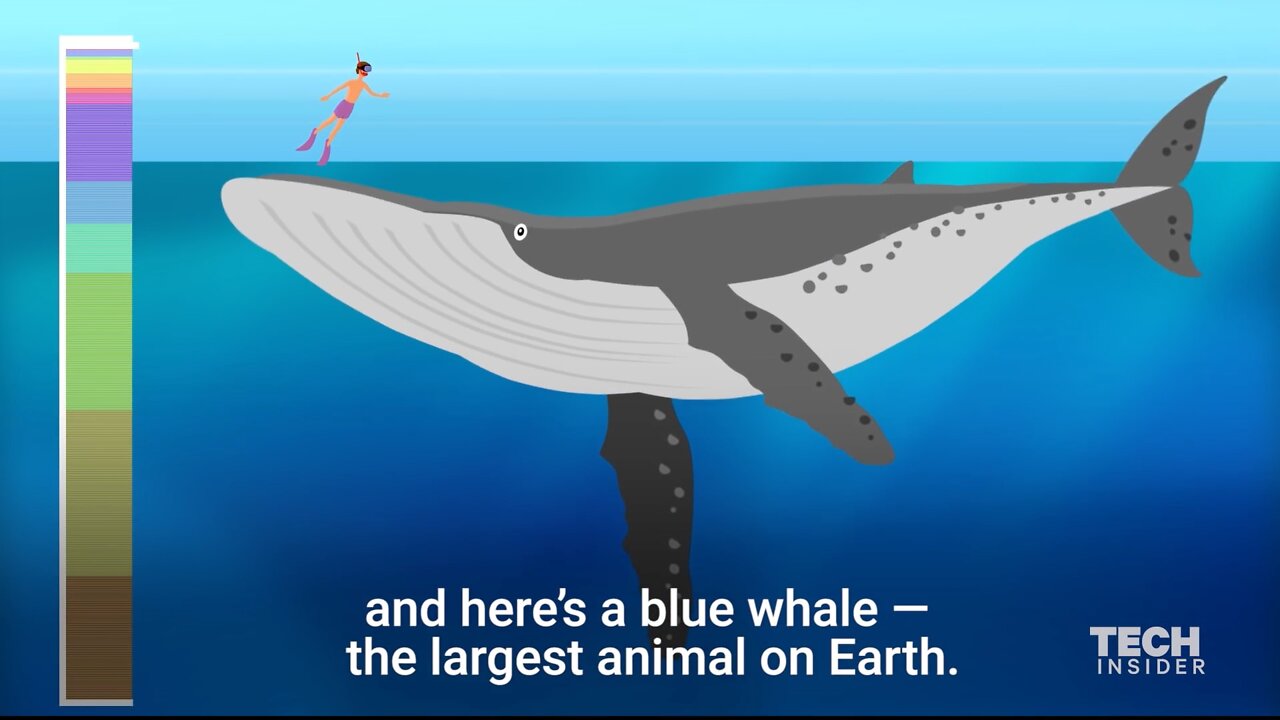Premium Only Content

How Deep Is The Ocean? - Incredible Animation Shows Us
Music:Bottom of the Sea by Dhruva Aliman - Amazon- https://amzn.to/3dgKA52 - Spotify - https://open.spotify.com/artist/5XiFCr9iBKE6Cupltgnlet - Apple https://music.apple.com/us/artist/dhruva-aliman/363563637 ...The deepest part of the ocean is called the Challenger Deep and is located beneath the western Pacific Ocean in the southern end of the Mariana Trench, which runs several hundred kilometers southwest of the U.S. territorial island of Guam. Challenger Deep is approximately 36,200 feet deep.
Depths from the surface to 0.2km is known as the “littoral zone”, from 0.2km to 3km, the “bathyal zone”, and from 3km to 6km, the “abyssal zone”. Anything deeper than that is the “hadal zone”.
The hadal zone is largely comprised of deep trenches caused by tectonic plate subduction that drive the vast abyssal plains steeply down to depths of 11,000 metres in places. But even here, animals thrive, blissfully unaware of how little attention they receive. Here’s an insight into their incredible world.
The term “hadal” comes from “Hades,” which refers both to the Greek kingdom of the Underworld and the god of the Underworld himself, Hades (brother of Zeus and Poseidon). The term can also mean the “abode of the dead”. In modern times, Hades is seen as evil, but in mythology he was often portrayed as unreasonably “stringent” rather than actively malicious. Interestingly, he strictly prohibited the inhabitants of his dominion to leave, which is a rather apt analogy for hadal fauna, as these species are often confined to trenches and are rarely capable of going elsewhere.
The extreme depths of the hadal trenches were discovered using “bomb sounding”, whereby someone threw a half-pound block of TNT off a ship and the echo was recorded on board the ship. This method was used to sound the depths of many trenches, but the exact depth of the deepest point, currently in the Mariana Trench, is still difficult to compute. Four other trenches, all in the Western Pacific, also exceed 10km: the Tonga, Kuril-Kamchatka, Philippine, and Kermadec trenches.
The HMS Challenger expedition (1873 to 1876) was the first to sample hadal depths – having collected sediment from about 8km – although it could not confirm whether or not the sediment was merely the remnants of shallower animals. The 1901 Princess Alice expedition successfully trawled specimens from over 6km. However, it was a 1948 Swedish expedition, which successfully trawled a variety of species from 7km to 8km in the Puerto Rico Trench, that finally proved that life existed at depths greater than 6km. In 1956, the first photographs of the hadal zone were taken by none other than
The hadal zone comprises a series of disjointed trenches and other deep spots. There are 33 trenches and 13 troughs around the world – 46 individual hadal habitats in total. The mean depth of the trenches is 8.216km. The total area of the hadal zone is less than 0.2% of the entire seafloor but accounts for 45% of the total depth range. It is therefore surprising that the deepest 45% of the sea is rarely mentioned in deep sea literature.
Of the 33 hadal trenches, 26 (84%) are located in the Pacific, three are found in the Atlantic (8%), two (4%) in the Indian Ocean, and two (4%) in the Southern Ocean. The majority run up the western Pacific. Most of the hadal trenches in their modern form are believed to have formed 65.5m years ago during the Cenozoic period.
Earth appears to be the only terrestrial planet with subduction zones and plate tectonics. Both Mercury and the Earth’s moon are tectonically dead. Mars appears to have tectonically ceased, and Venus is dominated by thick lithosphere with mantle plumes. On Earth, subduction zones produce continental crust, which can protrude from the ocean (the continents). It has been speculated that without subduction, the land would still be underwater and terrestrial life, including humans, would never have evolved.
Many marine organisms are found at hadal depths and the most common groups are the polychaetes, bivalves, gastropods, amphipods and holothurians. All of these groups are found at full-ocean depth and often in large aggregations. Contrary to popular media, the hadal zone is not a mysterious realm inhabited by aliens or “monsters of the deep”. Instead, it is a poorly understood region largely inhabited by hoppers, snails, worms, and sea cucumbers. In fact, the upper trenches are inhabited by little pink fish and bright red prawns.
Music:Bottom of the Sea by Dhruva Aliman
Amazon- https://amzn.to/3dgKA52
https://music.apple.com/us/artist/dhruva-aliman/363563637
https://dhruvaaliman.bandcamp.com/album/hard-to-get-along
http://www.dhruvaaliman.com/
Spotify - https://open.spotify.com/artist/5XiFCr9iBKE6Cupltgnlet
-
 3:39
3:39
Seeker Land
2 months agoYour "Star Wars" Speeder Hover-bike is Here, For Real - Volonaut
109 -
 2:33:04
2:33:04
Badlands Media
13 hours agoBaseless Conspiracies Ep. 147: Pole Shifts, Plasma Skies, and the Truth About Cataclysms
166K17 -
 4:33:42
4:33:42
Drew Hernandez
9 hours agoISRAEL BOMBS GAZA HOSPITAL ON LIVE TV KILLING AT LEAST 20 INCLUDING JOURNALISTS & CIVILIANS
20.8K52 -
 2:55:23
2:55:23
TimcastIRL
8 hours agoTrump Orders Specialized National Guard Units To Combat Crime In Cities, Dems Furious | Timcast IRL
205K144 -
 6:22:03
6:22:03
SpartakusLIVE
10 hours ago#1 Rocket CHAMPION of Verdansk wields UNSTOPPABLE new META
81.3K5 -
 2:55:11
2:55:11
Barry Cunningham
9 hours agoPRESIDENT TRUMP MADE TODAY A VERY BAD DAY TO BE A DEMOCRAT!
100K66 -
 1:15:29
1:15:29
Flyover Conservatives
1 day agoFrom Cool to Cringe: How Democrats Lost America’s Ear | FOC Show
48.1K14 -
 8:19
8:19
MattMorseTV
13 hours ago $8.93 earnedTrump is ACTUALLY DOING IT.
48.5K43 -
 11:30:43
11:30:43
ZWOGs
15 hours ago🔴LIVE IN 1440p! - Tarkov w/ Casey & crgoodw1n, Kingdom Come Deliverance, & More - Come Hang Out!
40.6K5 -
 2:30:56
2:30:56
We Like Shooting
19 hours ago $8.72 earnedWe Like Shooting 625 (Gun Podcast)
40.3K1